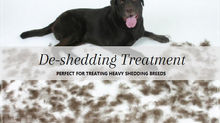Dogs and Adders - Keeping Safe

It’s summer and in some areas of the New Forest, such as heathland and open forest there are adders around which can give dogs a nasty bite.
Have you ever been told not to walk your dog in hot weather when adders are around? The flawed logic behind that advice could actually end up increasing your chances of an adder encounter. Here’s why…
Beware of cool adders
A hot adder is alert and fast. It will readily d
etect approaching footsteps and slither away from danger. A cool adder is dopey and sluggish. It can easily be caught off-guard and, unable to escape quickly, will be forced to defend itself.
So cool adders are the ones you really ought to avoid. Those who understand reptiles recognise the best times and conditions in which to find cool adders. By cool adders we mean those warm enough to have come out of their underground shelters but too cold to be very active. In that state they bask to soak up the sun’s warmth, giving you a good chance to spot them.
Watch the temperature
There is little point in looking for adders when the temperature is much below 10°C or much above 17°C. If it’s very cold, or dark, or raining heavily, the snakes will not venture out. If it’s hot, they will have little need to bask and they will be too quick to see.
There are no guarantees, but if you stick to walking when it’s colder than 10°C or warmer than 17°C, and ideally allow for an extra margin of error on those figures, you will be a lot less likely to meet an adder.
Where are we likely to come across adders?
The classic adder habitats are heathlands, grasslands and other natural-looking grassy areas such as the edges of beaches. You may have walked your dog amongst an adder population without even knowing it, as The New Forest is something of a stronghold for this declining and protected species.
Shift with the seasons and the weather
The time of day when reptile lovers are out looking for adders is in that 10°C to 17°C window.
You might well find adders basking in October, November, March and occasionally in even colder months. In spring and autumn, adders typically venture out between about 9 and 11 in the morning and 4 and 7 in the afternoon to give them the best chance of basking. That means you are relatively ‘safe’ walking before 9 am or after 7 pm – unless the weather is unusually warm for the season, in which case you need to go earlier in the morning or later in the evening.
In summer you have to get up very early in the morning if you want to walk before the adders wake. If the weather stays warm, they may still be moving around and basking well into the evening. The safest option, other than walking somewhere else, might be to go for a walk when it’s hot.
There are other complicating factors which make it impossible to give a precise definition of what is a bad time to walk your dog (or a good time to look for reptiles). For example, overcast weather with hazy sunshine filtering through the clouds can bring adders out basking at any time of day. Sunny periods between showers have a similar effect.
How serious is an adder bite?
To put things into perspective, many people in Britain have been bitten by adders – often because they pick them up – but the last death was in 1975. That’s over 40 years ago. Figures for dog casualties are hard to come by, but it does seem that most survive the experience – albeit with major illness and injury in some cases.
In the event of a bite, get to the hospital or vet, respectively, as quickly as possible but don’t panic. Try to slow down the spread of the venom by preventing running, over-excitement or movement of the affected area. Ideally, children and dogs should be carried.
To summarise
You can minimise the risk of stumbling upon a dozy, defensive adder by walking in areas where they are most likely to be found when it’s very cold, very hot or raining heavily. You can also walk in the dark, of course, as basking requires at least some sunlight.
However some people are afraid of adders, they have much more to fear from us and they will abandon an area if they are disturbed too much. Staying away – or keeping your dog on a lead – at the times when they are most vulnerable is good for your dog’s safety and for wildlife conservation.





















